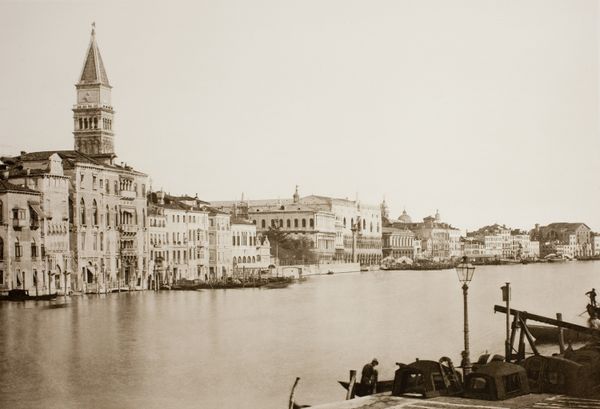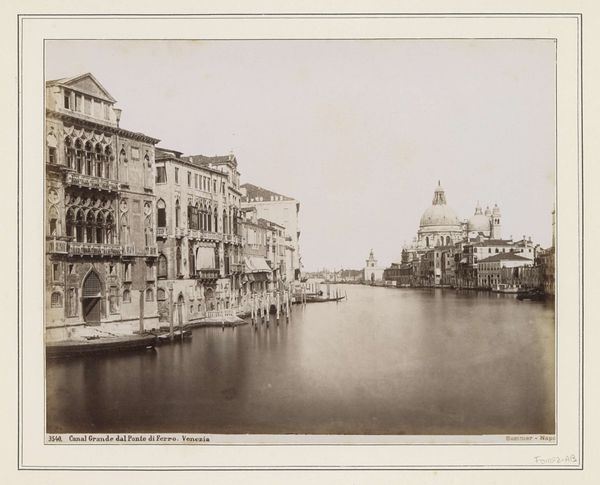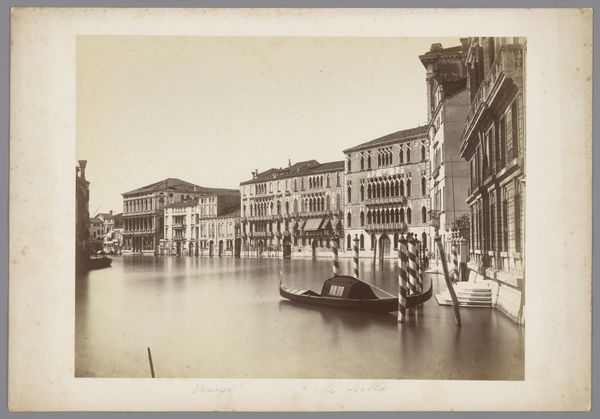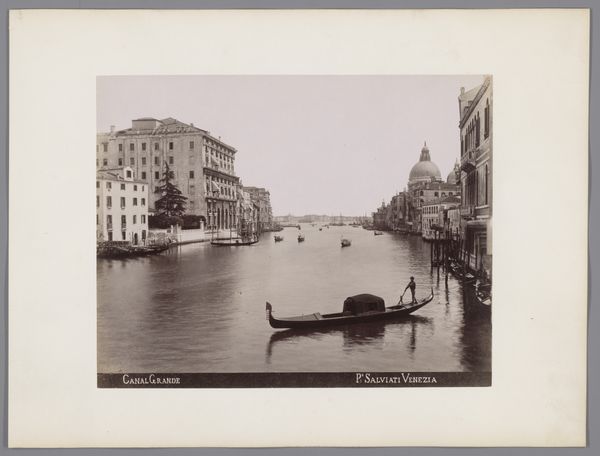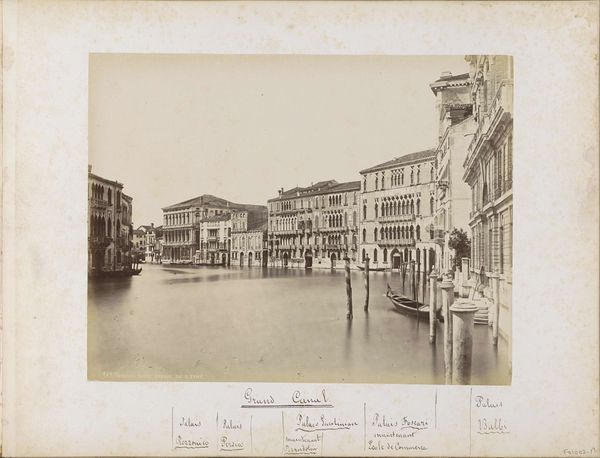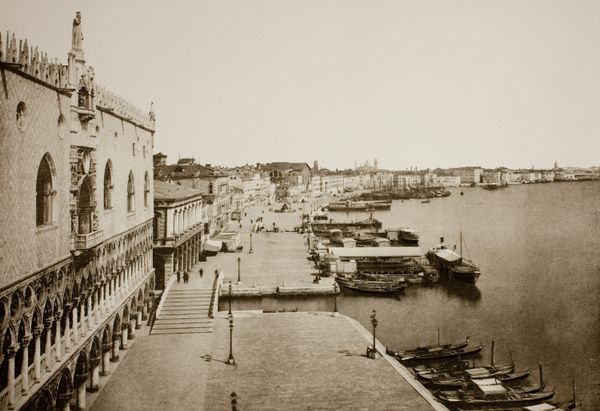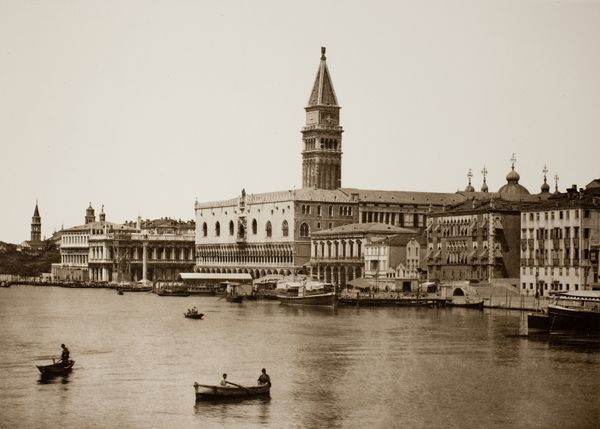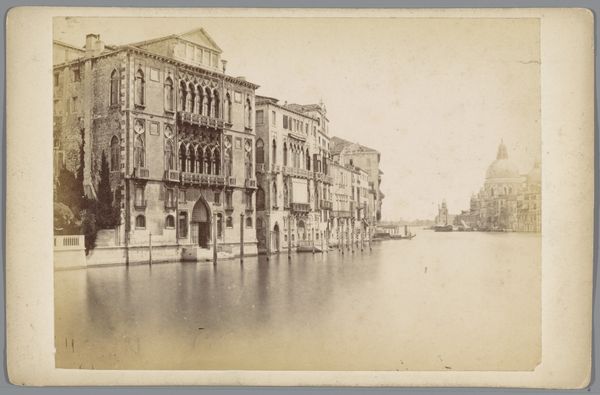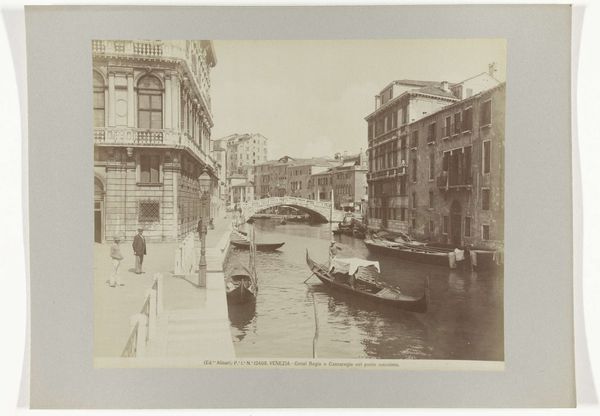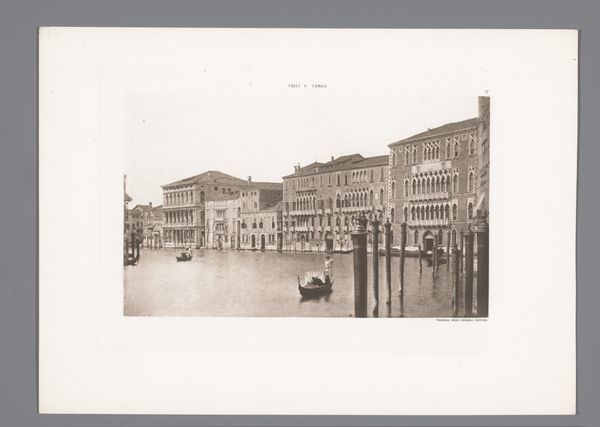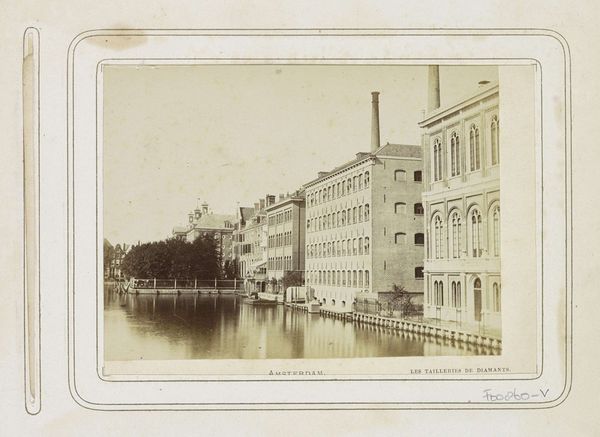
Dimensions: 22.8 × 35 cm (image); 37.1 × 55.1 cm (paper)
Copyright: Public Domain
This photograph of Venice was created by Ferdinando Ongania in the late 19th century, using a process called albumen printing. The image begins as a glass plate negative, then is transferred to paper coated with egg white and silver salts, which are exposed to sunlight to create the final sepia-toned image. Albumen printing was one of the first commercially viable photographic processes. It was valued for its sharp detail and tonal range, but was labor-intensive, requiring the artist to carefully prepare the paper. The process involved the mundane material of egg white, transforming it to make luxury items like souvenir photographs of Venice. The image itself is carefully composed, showing the city’s architecture, the Grand Canal, and a lone gondolier. In this photograph, the material and the making are deeply intertwined. The very qualities that made albumen printing so popular also speak to broader social issues of labor, politics, and consumption in Venice.
Comments
No comments
Be the first to comment and join the conversation on the ultimate creative platform.
